Use Cases and Users
Analytics informs a variety of operational functions. The most common analytics use case for operational functions was to inform admissions and enrollments—76% said their institution uses analytics for this purpose (see figure 4).1 Majorities also reported that their institution uses operational analytics to inform institutional strategic planning (74%), compliance requirements (72%), IT services (72%), financial aid (64%), operational efficiency (62%), human resources (55%), and facilities and events (51%). Less than half said that their institution uses operational analytics to inform procurement and campus services. Overall, respondents were fairly split in their reports of how frequently (i.e., a little/somewhat versus a lot) their institution is using analytics to inform operational functions.
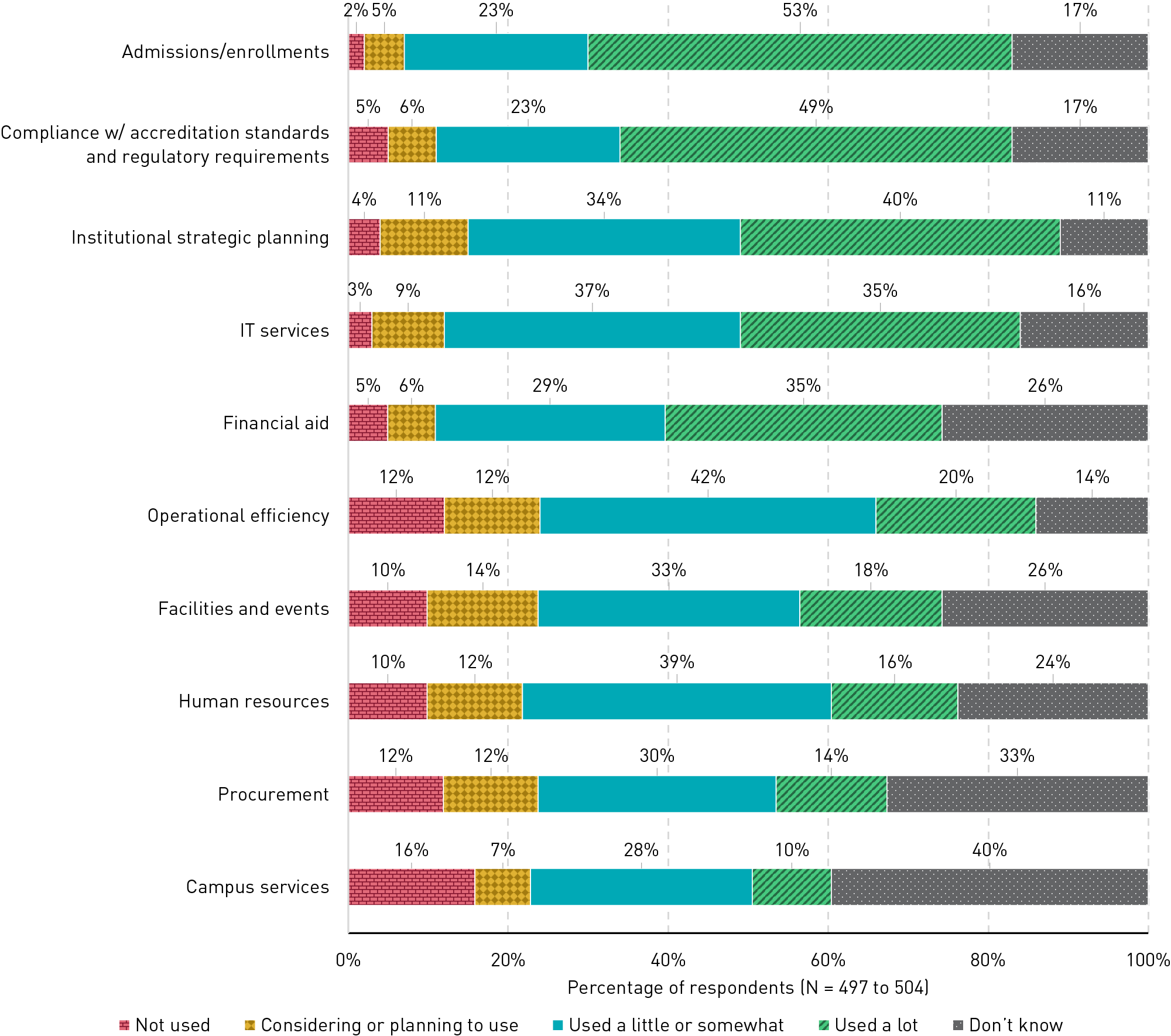
Analytics informs some financial functions at institutions. The most common analytics use case for financial functions was to inform budgeting—62% said their institution uses analytics for this purpose (see figure 5). Majorities of respondents also said that their institution uses financial analytics to inform forecasting (59%) and accounting and reporting (57%). The least common financial use case was to inform risk management (41%); respondents were fairly uncertain about the use of analytics for this purpose (41% said "Don't know"), which could explain why it was the least reported area of analytics use. Overall, across findings, professionals/staff were more likely than executives/directors to report that they don't know what's happening with the different areas of analytics practice, suggesting an opportunity for analytics to be more effectively communicated and shared throughout the organization.
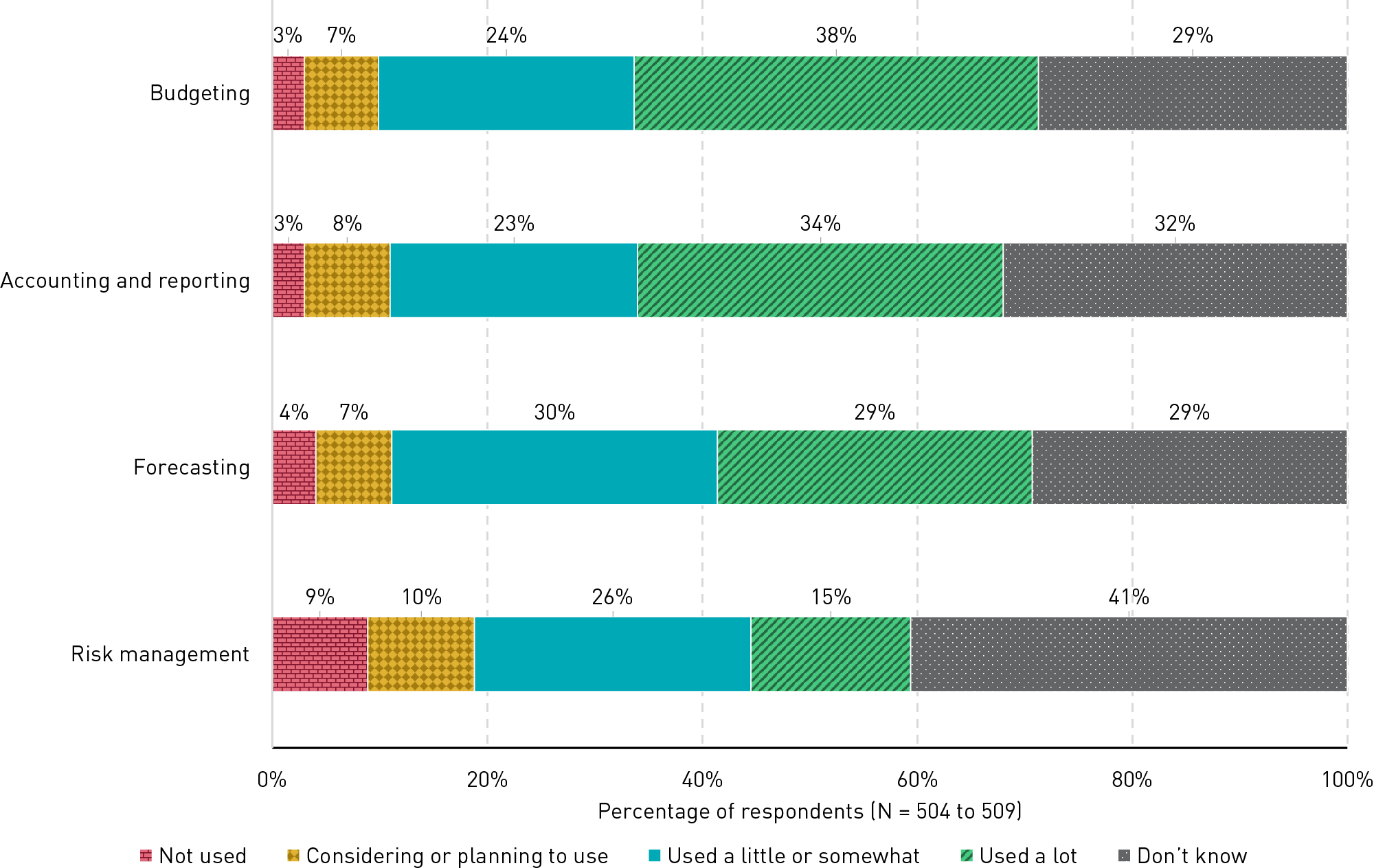
Analytics is less frequently used to inform research than other academic functions. The most common analytics use case for academic functions was to inform course scheduling—64% said their institution uses analytics for this purpose (see figure 6). Majorities of respondents also indicated that academic analytics is used to inform curriculum and academic programming (63%) and faculty performance (53%). Fewer respondents said that academic analytics is used to inform research funding (43%) and research productivity (46%). In all cases, more respondents said that their institution is using academic analytics a little/somewhat versus a lot to inform academic functions.
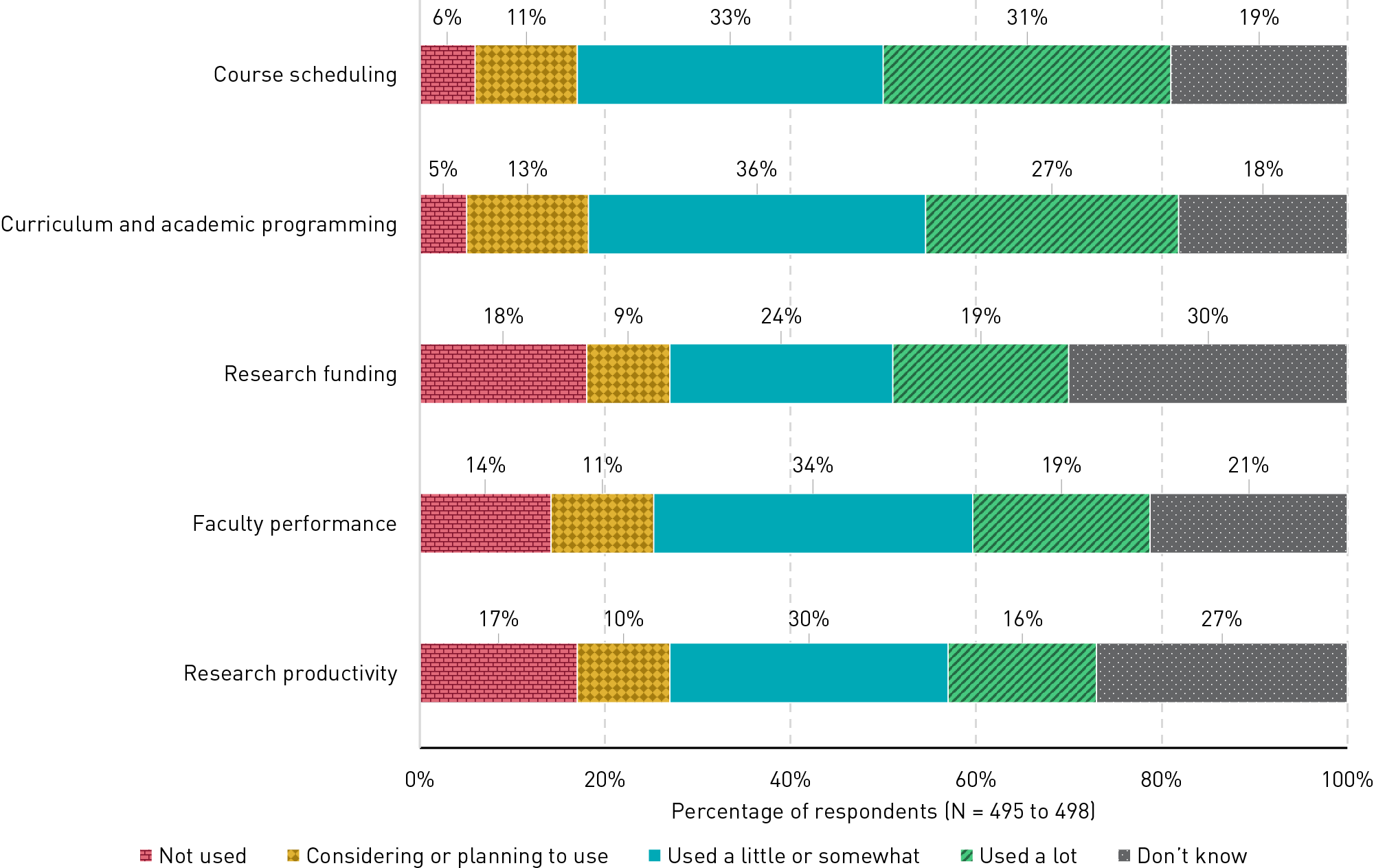
Analytics is more often used to identify at-risk students than other student success functions. The most common analytics use case for student success functions was to identify at-risk students—72% said their institution uses analytics for this purpose (see figure 7). Majorities of respondents also indicated that student success analytics is used to inform student degree planning and progress (66%), academic support services (63%), and academic advising (62%). The least frequent student success use case was to inform extracurricular activities (29%). In all cases, more respondents said that their institution uses student success analytics a little/somewhat versus a lot to inform academic functions.
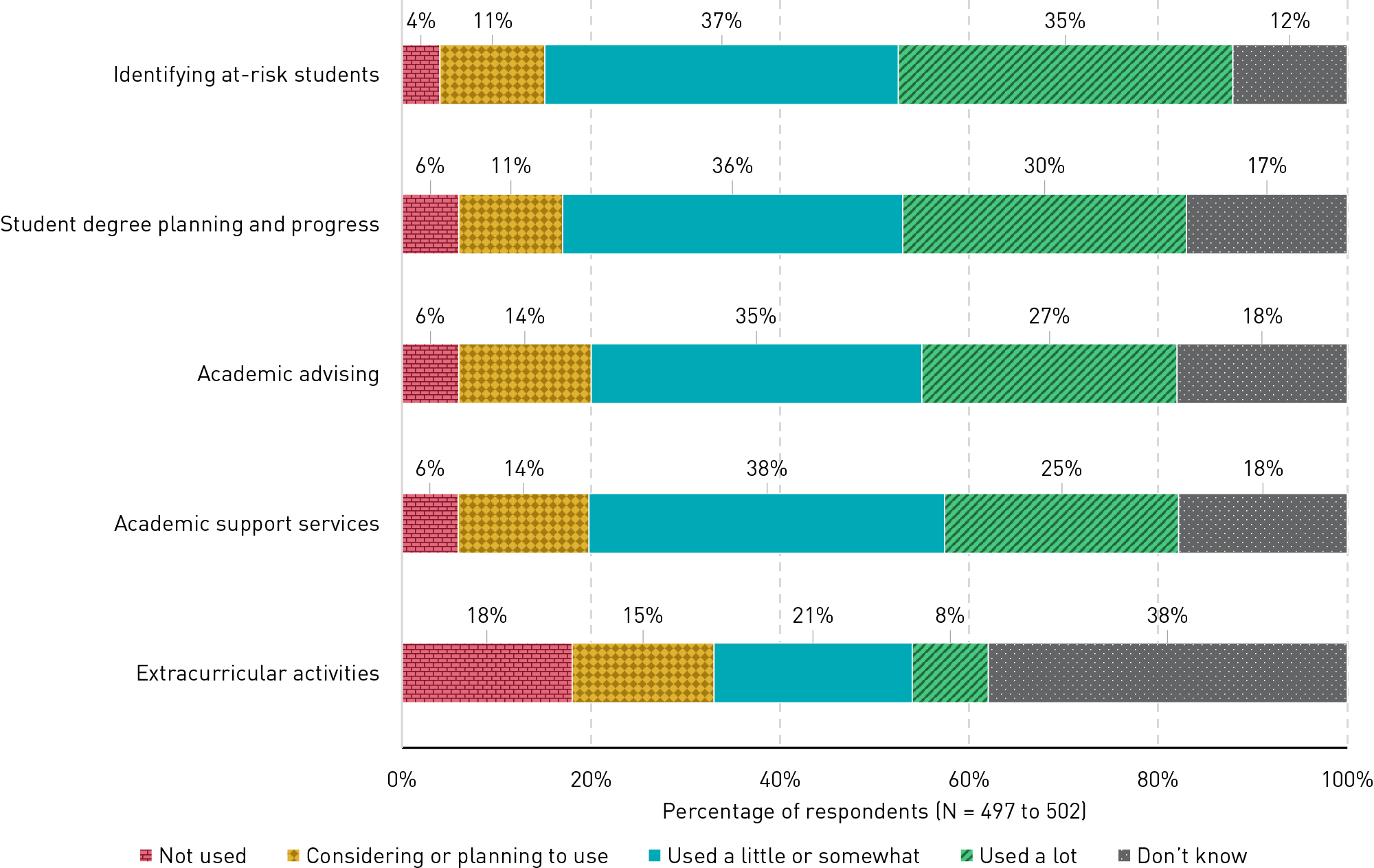
Analytics is more often used to inform student performance than other learning functions. The most common analytics use case for learning functions was to inform student performance—71% said their institution uses analytics for this purpose (see figure 8). A majority also reported that learning analytics is used to inform student engagement (62%), and half said it is used to inform teaching methods and practices (50%). The least common learning use case was for personalized/adaptive learning (38%). In all cases, more respondents said that their institution uses learning analytics a little/somewhat versus a lot to inform learning functions.
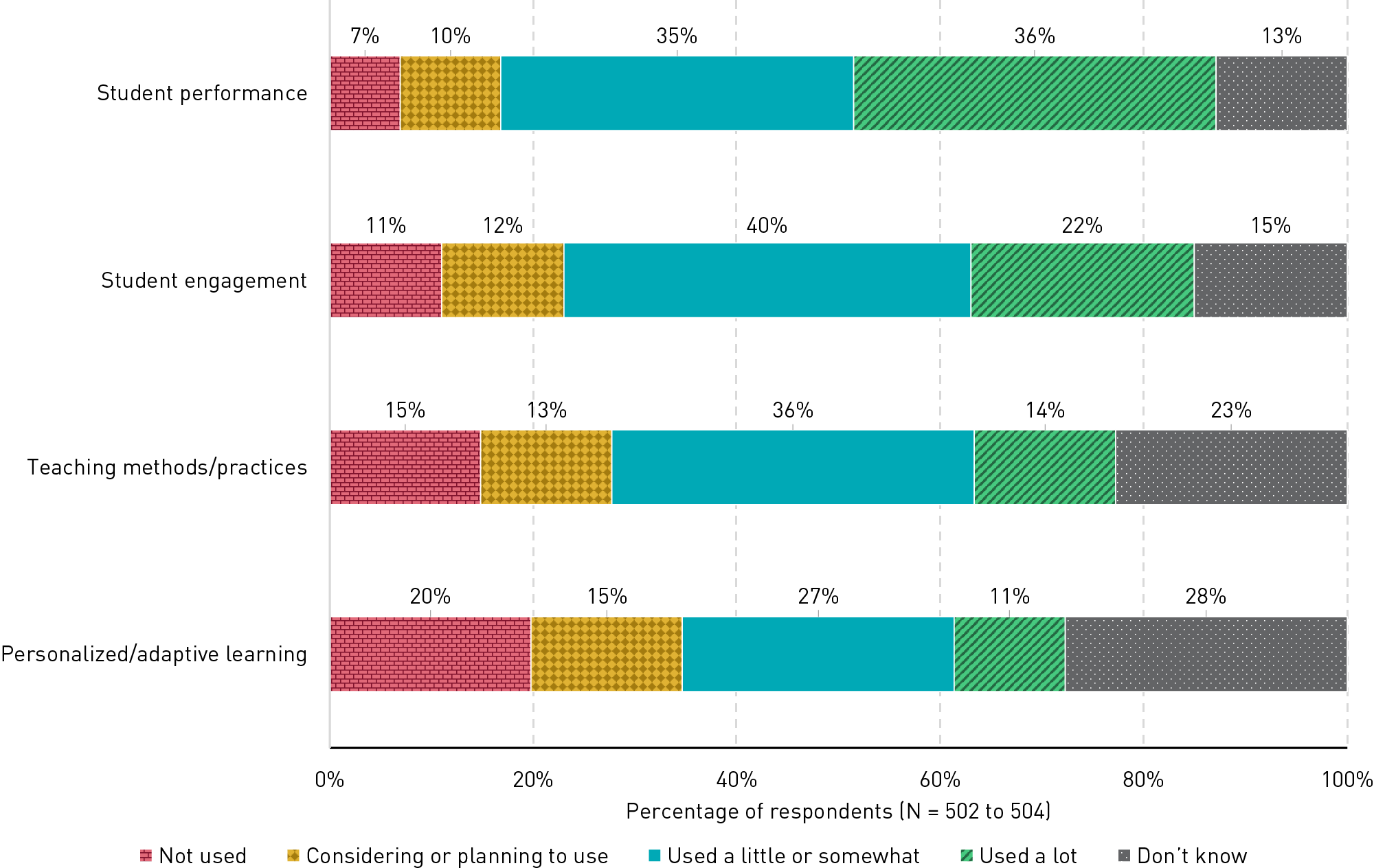
The top use of analytics is to inform operational functions. We compared the frequency of use cases across the different functional areas and found that the most common uses of analytics were to inform admissions/enrollments (53%), compliance with standards and requirements (49%), and institutional strategic planning (40%) (see table 1)—all of which are operational functions. For the remaining uses, similar proportions of respondents (31–38%) reported that their institution uses analytics a lot, and these included all functional areas.
| Functional Area | Specific Function | Percentage |
|---|---|---|
| Operational | Admissions/enrollment | 53% |
| Operational | Compliance w/accreditation standards and regulatory requirements | 49% |
| Operational | Institutional strategic planning | 40% |
| Financial | Budgeting | 38% |
| Learning | Student performance | 36% |
| Student success | Identifying at-risk students | 35% |
| Operational | IT services | 35% |
| Operational | Financial aid | 35% |
| Financial | Accounting and reporting | 34% |
| Academic | Course scheduling | 31% |
Most institutions are using analytics to describe and summarize what's happening. Respondents indicated that descriptive analytics were most commonly used to inform all functional areas, compared to other types of analytics (see figure 9). The most common use cases for each type of analytics were as follows: descriptive analytics to inform operational functions and academic functions, both 59%; diagnostic analytics to inform student success functions, 47%; predictive analytics to inform student success functions, 34%; and prescriptive analytics to inform student success functions, 24%. Notably, the data show a consistent pattern: across all functional areas, the number of respondents using each type of analytics decreased from descriptive to prescriptive. These findings suggest that institutions are currently using data most commonly to summarize and describe what is happening or has happened and that there is room for expanding analytics capabilities to answer the question of why, to make predictions, and identify actions/next steps.
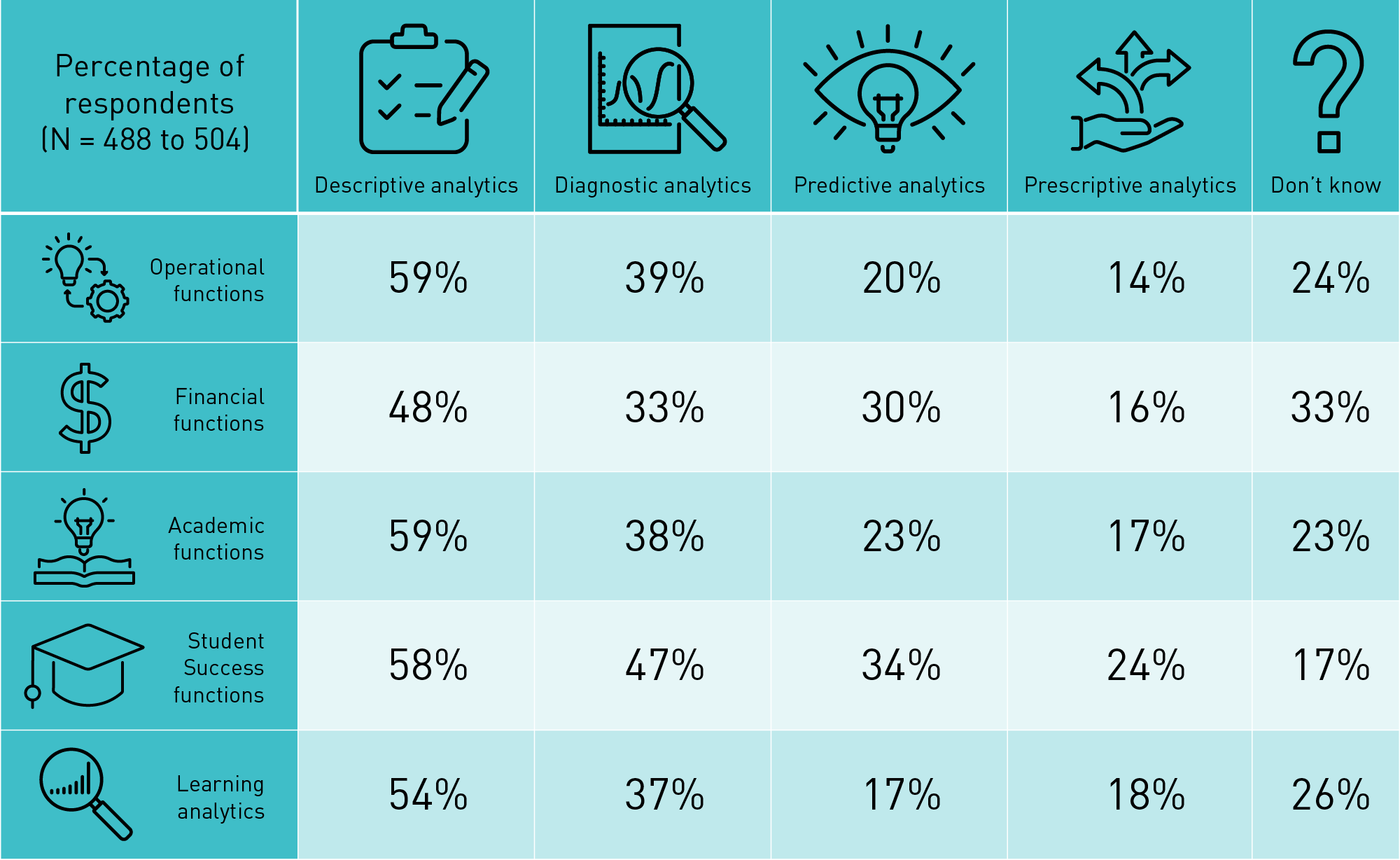
Directors and managers are using analytics the most. A majority of respondents (74%) said that directors/managers are using analytics somewhat or a lot (see figure 10). This was followed by professionals/staff (67%) and executives (65%). Fewer respondents reported that faculty (41%) and students (18%) use analytics somewhat or a lot, though a plurality of respondents (42%) were uncertain about students' use of analytics. It may be the case that student use of analytics is less visible to other stakeholders, especially those who are not in teaching/learning roles.
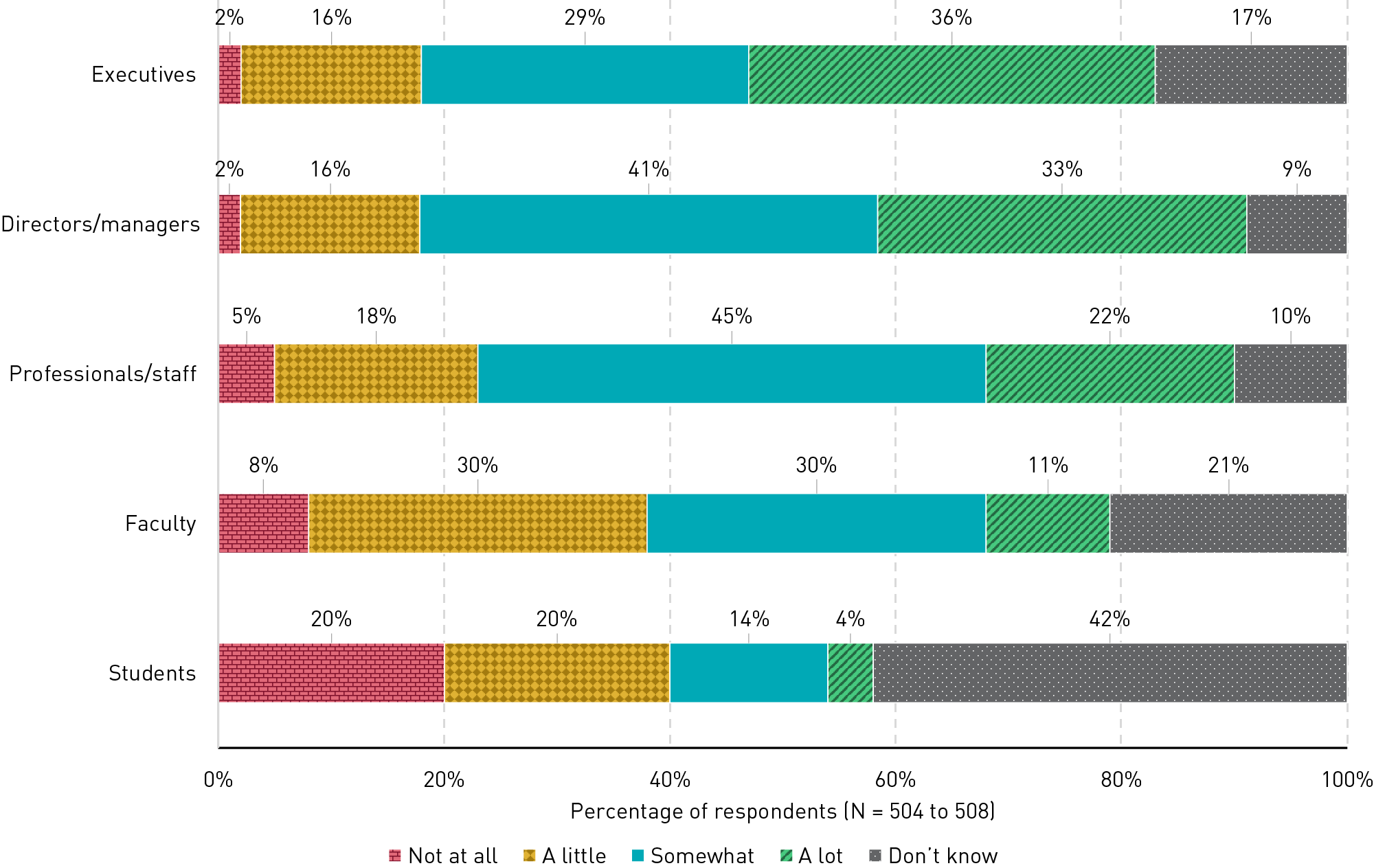
Note
-
Questions about use cases and users were only asked of participants whose institutions reported utilizing functional types of analytics.
↩︎